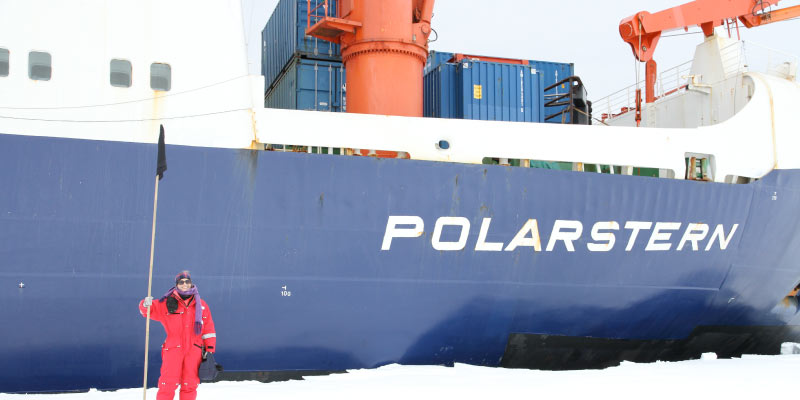
Rohde.
If you have ever asked yourself the question “What’s really going on in the ocean,” Assistant Professor Hannah Zanowski has the answers for you. Zanowski has studied just about every ocean on Earth and carries her curiosity and fun spirit with her on each of her many journeys.
Originally from the sunny state of Arizona, Zanowski obtained her undergraduate degree not too far from “home” from the University of Arizona in math and physics before moving across the country to get her PhD in atmospheric and oceanic sciences at Princeton University. Following graduation in 2016, Zanowski went on to do some postdoctoral work at the University of Colorado–Boulder and the University of Washington.
When she’s not in the classroom, Zanowski mainly studies the Arctic and Antarctic oceans, giving herself the title of “polar oceanographer.” She has recently been using climate models in attempts to answer broad questions about what will happen in the future or explain past oceanic events. But, as you will come to understand about Zanowski, “I’ve really jumped around in terms of my research; I tend to go down the path of whatever I’m interested in at the moment.”
What does your research primarily focus on?

N. Janinhoff
[As a graduate student,] my research was focused on studying the influences of open ocean polynyas on the abyssal ocean circulation. Polynyas are basically these giant holes that open up in wintertime sea ice in the Arctic and Antarctic. I used a bunch of climate models to help me answer questions about the impacts of various events. I then pivoted to focus on the west Antarctic region and continental shelf, as well as thinking about the equatorial Indian and Pacific oceans.
More recently, I’ve been doing some work using a few different climate models to understand freshwater in the Arctic as well. I’m working on running simulations where we’re looking at polynyas in the Arctic and asking how the hydrography of northern Baffin Bay in Canada evolved as a result of the melting ice sheets and glacial adjustment causing land uplift in the Holocene (the past 10,000 years or so).
This recent research has gotten me more interested in paleoceanography and deep time paleoceanography — when the ocean first formed four billion years ago — and how that potentially relates to the origins of life on Earth.
How did you find your interest in oceanography?
My first love was astronomy and astrophysics, actually. But I took an oceanography class during my time in undergrad and really liked it. It was a 200-level class that covered topics like atmospheric circulation, ocean circulation, plate tectonics, and other basics of the ocean. I wrote to one of the professors asking if she needed help in her research and ended up being mentored by her and helping her with her research, which was just an amazing experience.
What classes are you currently teaching?
I teach Computational Methods in Atmospheric and Oceanic Sciences (AOS 573) for graduate students. The class focuses on teaching Python for earth science research. Next semester I’m piloting an AOS 401 class for undergraduates to see if we want to add an oceanography class as an elective in the atmospheric and oceanic science major.
What was something you learned early on in your time as a professor?
One thing I promised myself through the process of accepting this job was to put myself first and figure out what my hard limit is and when to choose to walk away. So, I guess I just learned when to put myself first before my work.
What do you enjoy most about being a professor?
It’s an honor to be able to stand in front of a group of students and have them place their trust and faith in me and help them in their educational journey. It’s just humbling that students would look to me in this way. I really value and am touched by the fact that I can help people grow and learn the things that they want to learn.
What is a fun fact about atmospheric and oceanic sciences that you love?
Well, you should wake up every day and thank the ocean that we don’t live in a fiery hellscape, because it takes up 90 percent of the excess heat that is created in our atmosphere as a result of greenhouse gasses. Another fun fact is that the ice sheets over the Antarctic and Greenland are so large, that they actually gravitationally attract the ocean towards them. So, when the ice sheets melt, the sea level falls in the vicinity of the ice sheet because there is less mass to attract the ocean even though there is more water going into the ocean.